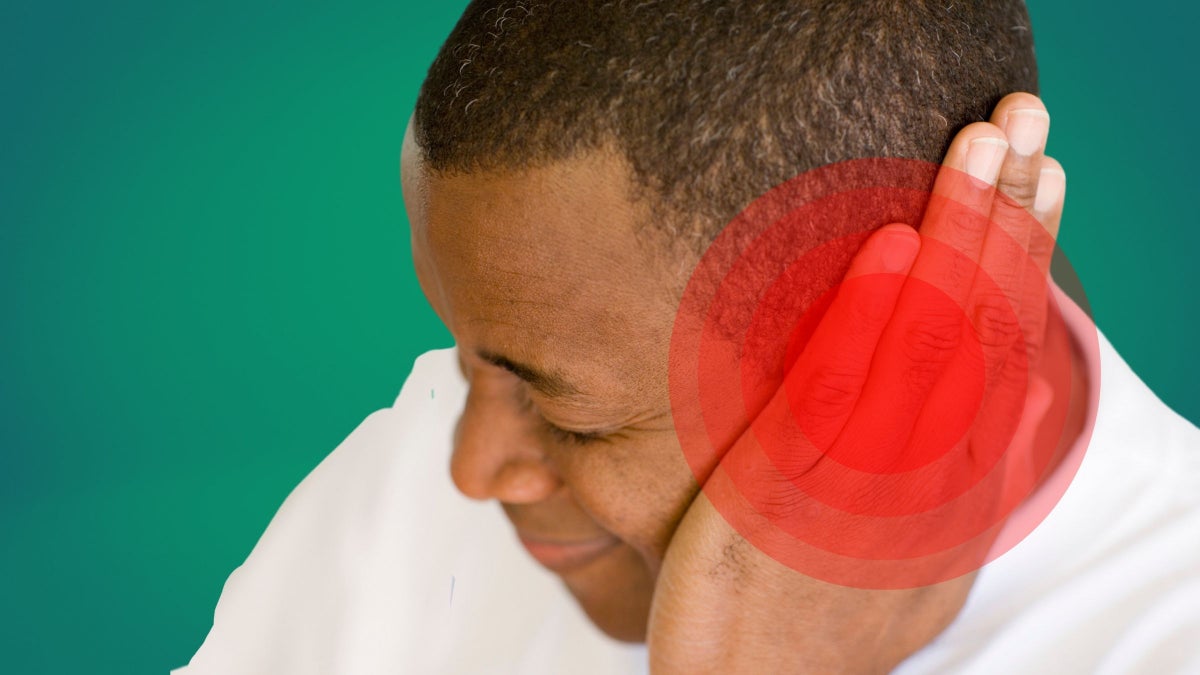How to Treat and Prevent Swimmer's Ear - Triathlete

For access to all of our training, gear, and race coverage, plus exclusive training plans, FinisherPix photos, event discounts, and GPS apps, >","name":"in-content-cta","type":"link"}}">sign up for Outside+.
Otitis externa, more commonly known as "swimmer's ear" due to its prevalence in swimmers, can be both painful and a training deterrent. Knowing how to treat and prevent swimmer's ear is important for triathletes, who spend a significant amount of time in pools, open water, and post-training showers.
What is swimmer's ear?
Otitis externa is an inflammation of the external ear canal, typically due to bacterial infections. Less commonly, fungal infections occur. Exposure to water in a pool macerates skin and breaks down protective barriers within the ear canal, resulting in an environment susceptible to bacterial growth.
"Fungus and bacteria like a moist environment," said Doctor of Audiology Carolynne Pouliot. About 10% of people are estimated to experience otitis externa at some point in their lives, with swimmers at a five times greater risk than non-swimmers. Those with narrow external ear canals may be more predisposed to the condition, and risk increases in the open water, particularly in more contaminated environments.
Symptoms of swimmer's ear
Early on, swimmer's ear presents as ear itchiness and pain. As the infection progresses, fluid and discharge often occur, and may lead to feelings of fullness and intermittent hearing loss.
A look inside the ear by a medical professional will reveal redness and swelling. Pain may increase with tugging at the earlobe, or with pressing on the tragus, a small piece of cartilage on the front of the ear that partially covers the ear canal. Nearby lymph nodes may swell.
Is it swimmer's ear or something else?
Though swimmer's ear is a common diagnosis in triathletes, it's not the only cause of ear pain. Inflammation and infection can strike the middle ear, causing a middle ear infection, termed otitis media. These are more common in children due to the orientation of the Eustachian tubes, said Pouliot, but can occur in adults as well. Middle ear infections can be caused by viruses or bacteria and, unlike swimmer's ear, may be associated with a recent cold or flu (especially if accompanied by a fever). Inner ear infections may also occur, but these will cause dizziness and vertigo, which does not occur with swimmer's ear.
RELATED: Why Do I Get Dizzy After Swimming?
Various ear tumors, which are typically benign, may cause ear pain and discharge, among other symptoms. Exotoses, in particular, are a benign bony tumor of the outer ear that is more prevalent in those with frequent, prolonged cold water exposure.
While a proper diagnosis by a medical professional is always recommended, chances are if you're an adult with isolated ear pain and fullness that began after swimming and is worsened by mechanical disruption of the ear, you're looking at a case of swimmer's ear.
Treating swimmer's ear
If symptoms of swimmer's ear start to set in, Pouliot suggests drying out the ear with several drops of rubbing alcohol, followed by drops of warm mineral, baby, or olive oil inside the ear. Apply a warm compress to the outside of the ear to help alleviate the pain. Taking non-steroidal anti-inflammatory drugs, such as aspirin, ibuprofen or naproxen may also be useful for pain relief.
If the pain persists beyond two days, head to a physician. "You'll probably need antibiotic drops," Pouliot said. "These drops effectively treat swimmer's ear, usually clearing up infections within a week." Systemic antibiotics are not recommended for a localized infection.
Some drops for treating swimmer's ear also contain corticosteroids, which may be beneficial for decreasing inflammation and itching when used in combination with antibiotics. (For those concerned about compliance with anti-doping rules in triathlon: topical corticosteroids in ear drops are WADA-legal).
RELATED: Why Do I Get Dry Skin After Swimming?
Can I keep swimming while recovering from swimmer's ear?
If infection has already set in, you will logically need to avoid getting water into the ear. Yes, this means no swimming until given the medical O.K.—typically after 7-10 days of treatment with drops. During this time, you'll want to wear earplugs in the shower to keep additional water from getting into the ear.
You'll also want to let your ears dry out as much as possible, so avoid wearing earbuds or in-ear devices while recovering from swimmer's ear. Many are tempted to clean or dry their ears by shoving Q-tips down them, but doing so may harm the skin of the ear canal and damage its protective barrier against infection.
Since a week out of the water can hamper training, and swimmer's ear is prone to recurrence, most people who have experienced swimmer's ear once take great cautions to prevent it from happening again. Pouliot recommends keeping the ear canal as dry as possible by using ear plugs while swimming. After a swim, a few drops of rubbing alcohol in the ear can help expedite drying, as can using hair dryers on a low-heat setting. Drying out the ears is especially important after swims in non-chlorinated open water environments, like lakes and oceans, where more bacteria may be present.
RELATED: Smell Ammonia? Taste Metal? Your Body's Trying to Tell You Something
Comments
Post a Comment